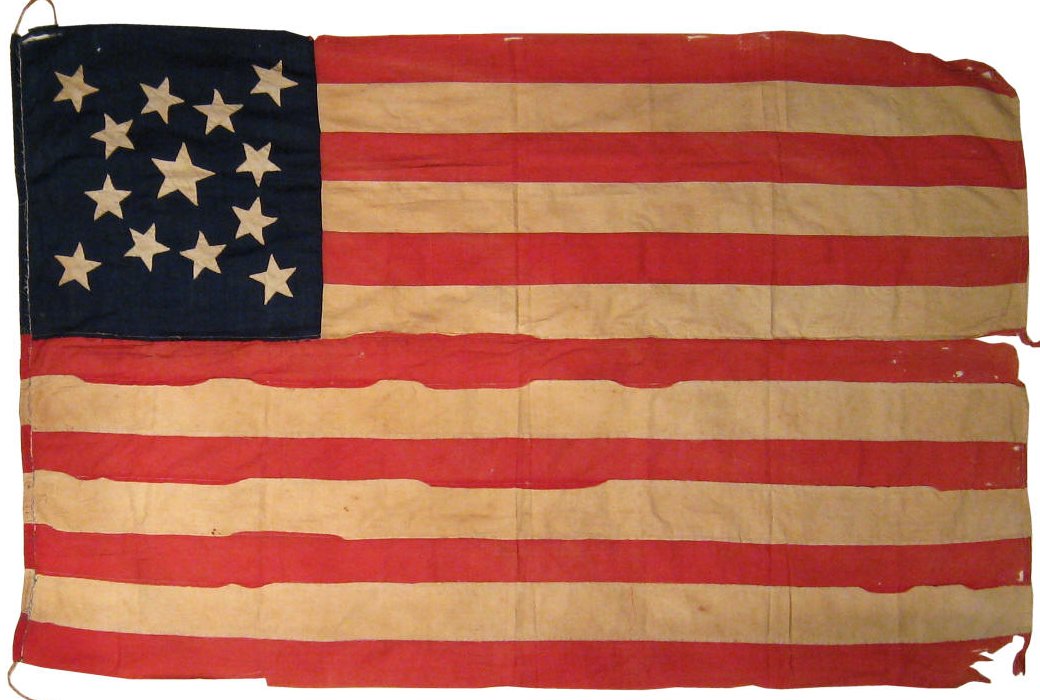 This charming American
Flag of the Centennial Era provides an interesting
example of how variations of design, construction, age
and form can elevate a flag among its peers as true
rarity. Americans have made thirteen star flags
throughout our history, both as a show of patriotism and
also for practical purposes. Consequently, antique
thirteen star flags are not as scarce as one might
expect (although actual period 18th century examples are
virtually unknown). Yet traits of this flag are
unusual and, taken together, most likely unique. This charming American
Flag of the Centennial Era provides an interesting
example of how variations of design, construction, age
and form can elevate a flag among its peers as true
rarity. Americans have made thirteen star flags
throughout our history, both as a show of patriotism and
also for practical purposes. Consequently, antique
thirteen star flags are not as scarce as one might
expect (although actual period 18th century examples are
virtually unknown). Yet traits of this flag are
unusual and, taken together, most likely unique.
The medallion pattern on
this flag is most commonly found on smaller printed
parade flags, and is unusual on larger sewn flags which
were more often arranged into the 3-2-3-2-3 Francis
Hopkinson pattern. The presence of a subtly larger
center star is another visually attractive
embellishment. Another rare trait is the fact that
the canton of the flag only spans six stripes instead of
seven and sits on a red stripe, known as the "blood
stripe", on speculation that this design was done
intentionally during time of war. My experience
with flags makes me skeptical that this was the case,
and instead I believe it was merely driven by available
materials and the whim of the seamstress. This
flag, for example, is most likely a post-Civil War flag
made during peace time. A clear indicator that the
flag was homemade, aside from its all-cotton
construction, is the lack of a hoist. Instead, the
stripes and canton are stitched to form a sleeve hoist
through which a thin rope is still present.
Although later period wool thirteen star medallion flags
were made for maritime use as small ensigns, this flag,
given its construction from cotton, which would have
been a poor choice for extended outdoor use. This is
good evidence that it was made to fly on land, which is
uncommon for thirteen star flags. Overall, the
beautiful handiwork, simplicity of design, and folky
design and execution makes the flag a rarity among its
peers, and a wonderful example of the type.
|

